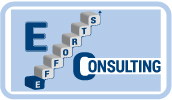Success of Lean in Public Governance – A Case Study
Bus Rapid Transport System (BRTS) in Ahmedabad
Unlike its Delhi twin, Ahmedabad’s Colombia-inspired Bus Rapid Transport System (BRTS) is its pride. It is nearly 30 km long and will grow to 90 km in two years.
How did they do it with respect to Lean Principles?
For the first three months, the Ahmedabad Municipal Corporation (AMC) ran its BRTS free, then made design changes based on commuter feedback, such as longer buses (Trial Model and Continual Improvement). During the first three months of the trial run last year, the AMC picked up special opinion makers-students, professors and teachers, journalists, top industrialists of Gujarat-and gave them free rides to seek suggestions (Small improvements- Kaizen through Cross Functional Team). Most were used. The way the lanes have been drawn (TFM), the bus stands designed (Elimination of Mura and Muri) and the manner in which the system is managed by a computerised traffic management (5S, Kaikaku and TSM) and signal control system from a chamber in the AMC office is proof of its success (Top Management Commitment – Sustain). The broad roads of Ahmedabad have also helped. Ahmedabad Municipal Commissioner I.P. Gautam says, “We gave the people a sense of ownership (Lean Pillar: THM)”
Ahmedabad’s BRTS has the following special features that have truly made it a cut above the rest:
-
- Over 60 buses with GPS enabled facility with 2 way voice days and Passenger Information System as well as e-ticketing system.
- Extensive application of Intelligent Transport System (ITS).
- Low floor buses with large central doors of both sides. Accessible to persons with special needs.
- Bus Stations with the latest technology.
- Option of a Janmarg Travel Card that saves the commuter the need to stand in long lines and buy tickets.
A Comparison of Old Bus System (AMTS) Vs. BRTS – A lean Perspective
| AMTS | BRTS | Lean Concept/Tool |
| Probably more quantity than requirement in some of the routes, while in some routes less frequency | Routes as per customer demand, covered most of the major junction | Pull Management |
| Congested sitting arrangement, dirty bust stand, half of the bus parking were occupied by private auto and vehicles in entire city | Spacious sitting arrangement with in almost same size of buses, specific bus parking, no private vehicles are allowed in BRTS route | 5S – Standardization, Flow management, Visual management, Focused improvement |
| Illegible information board, timing of the arrival of bus and reaching to its destination was unknown | Visually improved board – use of digital technology, Clear arrival time mentioned at the bus station, minimum waiting time | 5S, Reduced Muda of Waiting, Muda of Over production, Muda of Inventory |
| Inspite of having marked boarding place, because of flexible layout, buses were parked ahead or before the stand. It was cumbersome to get into the bus | Specific boarding place, Automated doors at the station and in bus, Bus door are controlled by driver himself, | Reduced Muri, Standardization of boarding, use of Andon (controlling of Door by driver) |
| One bus had one driver and conductor. Meaning, 2 manpower per bus | Tickets are given at the bus station and checked when you get down at the bus | Lean Thinking and Kaizen, Muda of motion and Transportation reduced |
| AMTS was travelling at every nook and corner however due to improper planning, utilization of its capability was very low | Covered the major juncture of the City with boarding points at specific junction | Heijunka, Working as per customer demand |
| AMTS had a problem frequent breakdown, broken seats, broken windows etc | BRTS comparatively well maintained, Ergonomically designed seats which does not need or almost few maintenance | TPM, MURI |



Great content! Super high-quality! Keep it up! 🙂